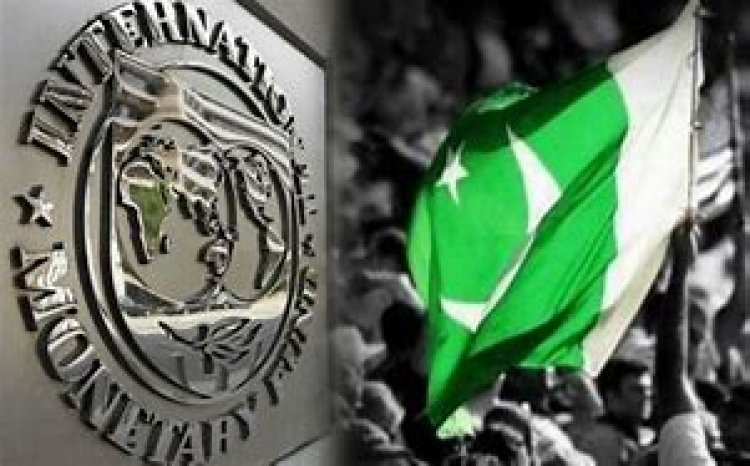Pakistan's IMF Loan Legacy and Economic Journey
Pakistan has borrowed from the IMF 23 times since 1958. The latest loan, worth $3 billion, was approved in July 2023.

Pakistan has a long history of borrowing from the International Monetary Fund (IMF). The first loan was approved in 1958, and since then, Pakistan has borrowed from the IMF 23 times.
Pakistan's Transformation under Ayub Khan's Leadership (1958-1968): -
Following a military coup that led to the downfall of Iskandar Ali Mirza's government, General Ayub Khan adopted a different approach by taking the country down the path of the IMF. He entered into an agreement, known as the Standby Agreement, in order to secure special drawing rights (SDR) amounting to 25 million. Interestingly, this allocated sum was never actually withdrawn.
Subsequently, Ayub Khan's financial team pursued two consecutive IMF programs in 1965 and 1968. In contrast to the previous agreement, during these programs, they successfully withdrew the entirety of the agreed upon amount, which amounted to approximately SDR 112 million. This marked the official entry of Pakistan as a new client of the IMF.
Bhutto's Dependence and the Quest for Assistance (1972-1977): -
Following Ayub's reign, Zulfikar Ali Bhutto, who was previously favored by the military dictators, led Pakistan to seek assistance from the IMF once again on May 18, 1972. It seemed that Bhutto had a strong affinity for the IMF as he continuously sought their support numerous times. Throughout his tenure, Pakistan approached the IMF consecutively on three occasions from 1972 to 1974, and later in 1977, withdrawing approximately SDR 314 million out of the agreed SDR 330 million.
From Succession to Obsession General Under Ziaul Haq (1980-1981): -
After General Ziaul Haq assumed power as the successor to Zulfikar, Pakistan entered a dark chapter in its history. Despite their occasional disagreements, both leaders shared a common obsession with the International Monetary Fund (IMF). Under Zia's leadership, Pakistan approached the IMF twice, securing loans amounting to SDR 2.187 billion. However, only SDR 1.079 billion of the obtained funds were utilized.
PML-N and PPP Reign (1988-1997): -
Although Zia may have died in a plane crash in 1988, his contributions to the IMF have endured. Nawaz Sharif and Benazir Bhutto emerged in Pakistan as democracy began to flourish in the country.
During the period from 1988 to 1997, while the experienced and efficient Pakistan Peoples Party (PPP) and Pakistan Muslim League-Nawaz (PML-N) were in power, Pakistan engaged in IMF programs approximately eight times. During this period, Pakistan received around SDR 1.64 billion in withdrawals. Out of these eight programs, five occurred under the PPP administration, while the remaining three were implemented during the PML-N administration.
Resilience and Success: Musharraf's Journey (1999): -
The IMF did not receive any loan requests when General Pervez Musharraf toppled Nawaz Sharif's government and assumed control. Despite this, Musharraf promptly reached out to the IMF without hesitation. Through two attempts spanning nine years, he successfully secured SDR 1.33 billion at remarkably favorable interest rates.
From Rescue Package to Policy Priorities Under PPP Government (2008): -
Upon the removal of Musharraf from office by the PPP in 2008, the PPP approached the IMF with the intention of securing the largest IMF rescue package in our history, amounting to SDR 4.94 billion. The IMF outlined several requirements for Pakistan, which encompassed improvements in tax administration, the elimination of certain tax exemptions, and the establishment of an interest rate corridor. Nonetheless, the macroeconomic policies pursued were excessively expansionary, and the underlying structural issues within the economy were not adequately addressed through fundamental changes. The mission and the government reached a general consensus on the following policy priorities: implementing a more restrictive fiscal policy, adopting a less accommodating monetary policy stance, and implementing structural reforms.
PML-N's Successful IMF Loan Journey (2013-2016): -
After reclaiming power in 2013, the PML-N promptly approached the IMF, following a historical pattern. Consequently, they secured the second-largest loan amounting to SDR 4.399 billion. This loan was utilized in a three-year program that concluded in September 2016, resulting in improved macroeconomic stability as per the IMF's evaluation. The IMF's concluding statement attributed the enhanced growth, reduced budget deficit, and replenished foreign exchange reserves to this program. Additionally, structural reforms were set in motion.
Imran Khan's Economic Journey and IMF Loans (2018): -
In July 2019, Imran Khan's government was granted approval for an IMF EFF loan amounting to SDR 4.268 billion (approximately $6 billion). Throughout Imran Khan's tenure as Prime Minister, Pakistan received a total of SDR 3,159.5 million from the IMF, distributed in four separate installments. In order to avoid strict IMF conditions, Imran Khan actively negotiated favorable loan terms with Saudi Arabia, the United Arab Emirates, and China. However, in 2019, when the country's economy worsened, they once again approached the IMF for a loan of $1 billion, marking the twenty-second time they made such a request.
Under PML-N Regime (2023): -
On July 12, 2023, the IMF Executive Board granted approval for a stand-by agreement (SBA) of $3 billion, which serves as Pakistan's latest loan. The SBA will assist in tackling Pakistan's economic challenges, such as increasing inflation and a widening current account deficit.
Regime Years Amount (SDR)
Ayub Khan 1958-1968 112 million
Zulfikar Ali Bhutto 1972-1977 314 million
Ziaul Haq 1980-1981 1.079 billion
PML-N and PPP 1988-1997 1.64 billion
Musharraf 1999-2008 1.33 billion
PPP 2008-2013 4.94 billion
PML-N 2013-2016 4.399 billion
PTI 2018-2022 3,159.5 million
PML-N 2023 3 billion








